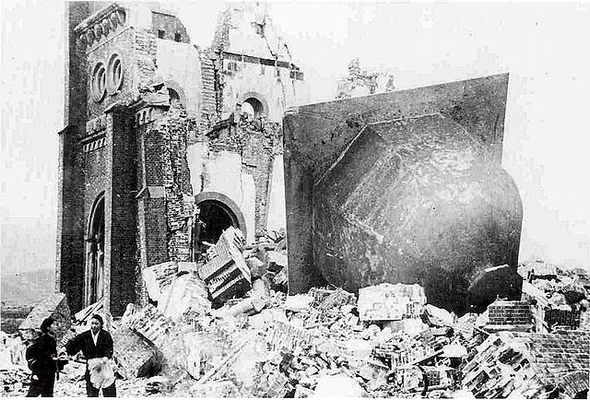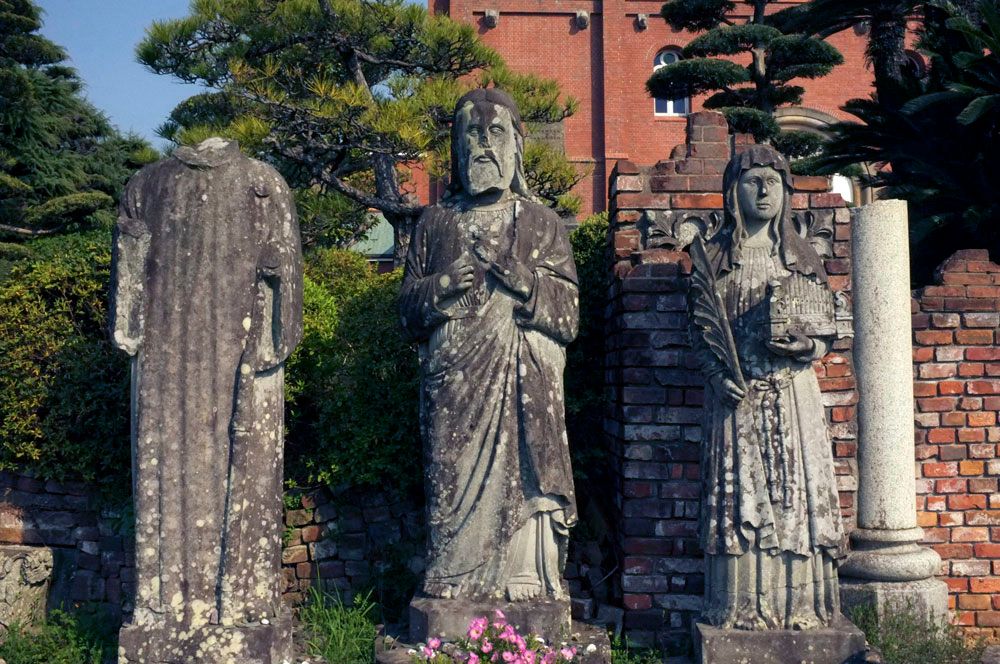About
At 11:02 a.m. on August 9, 1945, an atomic bomb landed 1,640 feet from the Urakami Cathedral in Nagasaki, Japan. Though the building was almost completely destroyed, some remnants of the church still exist. The wooden head of a statue of the Virgin Mary, which survived the bombing, is brought outside the cathedral for a peaceful memorial procession each year on August 9th.
Even before the dropping of the atomic bomb, Christians in the Urakami District had experienced a long history of suffering. The area was where many hid during the the ban on Christianity in Japan and the resulting persecution between the 17th and 19th centuries. Those who were suspected of being Christian were subjected to fumi-e interrogations, where they were made to step on images of Jesus or the Virgin Mary to prove they didn’t practice this forbidden religion.
When the ban was finally lifted in the 19th century, locals built the Urakami Cathedral on the site where many of these shameful interrogations had occurred. The original building, which was the largest Christian structure in East Asia, was a symbol of their perseverance and dedication to their faith.
However, World War II reduced the grand architectural novelty to ruins. When the atomic bomb dropped, two priests and about 30 parishioners were inside the church. All were killed almost instantly. For the surviving members of the congregation, the tragedy was more than just a consequence of war—it was a great spiritual loss, too.
The cathedral was rebuilt near where its predecessor had once stood. Parts of the original building are now preserved in the Nagasaki Peace Park and at the Nagasaki Atomic Bomb Museum. The salvaged head of the Virgin Mary, with its dark, hollow gaze, is one of the few religious relics that survived. It rests in a special chapel within the cathedral, except for when it's brought outside each year to mark the anniversary of the bombing.
Related Tags
Know Before You Go
From Nagasaki's central station get on the streetcar Number 1 for "Akasako" and get off at the "Matsuyama-machi" tram stop. It takes about 10 minutes to walk to the cathedral.
Hidden Japan: Sado Island, Nara & Kyoto
Explore a different side of Japan.
Book NowPublished
August 16, 2017
Sources
- https://www.google.com/culturalinstitute/beta/exhibit/QRfpvy4V
- https://en.wikipedia.org/wiki/Immaculate_Conception_Cathedral,_Nagasaki
- http://www.japantimes.co.jp/news/2005/08/10/national/nagasaki-cathedral-chapel-enshrines-a-bombed-statue-of-the-virgin-mary/#.WY3SM9Pyu8U
- https://udayton.edu/imri/mary/u/urakami-bombed-mary-statue.php
- https://voices.nationalgeographic.org/2015/10/08/nagasakis-hidden-christians-survive-persecution-and-the-atomic-bomb/
- http://nagasakipeace.jp/english/map/zone_tenshudo/urakami_tenshudo.html
- https://www.google.com/culturalinstitute/beta/exhibit/QRfpvy4V

























